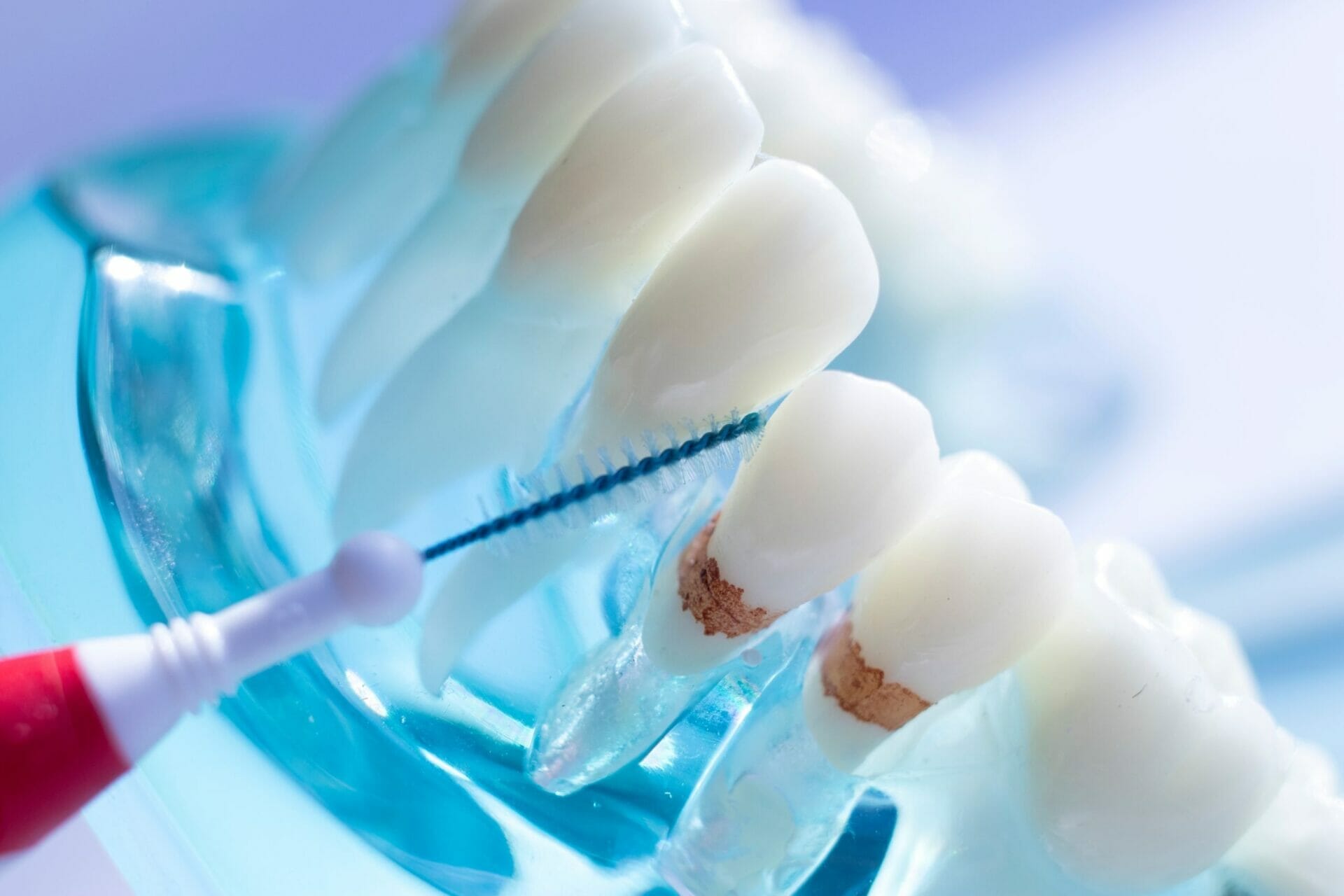
I'm Kyle Hornby and I am a Dentist in Kitchener-Waterloo. Each week, I tackle subjects to help raise the bar on dental health information available to the public. Today, I'm going to discuss how to best manage food traps, how they allow food to accumulate between teeth, and the long-term damage they can cause.
Out of all the new patients we see each year, many acknowledge that food trapping between their teeth is one of their chief concerns. As you may know, food trapping between your teeth can cause an annoying and unpleasant pressure sensation. Clinically, food accumulation can fuel tooth decay as well as inflammation and gum disease.
So, how do "food traps" (the small gaps between teeth where food gets stuck) develop and what can be done to better manage them? How can we reduce or eliminate food and plaque accumulation between teeth to stave off cavities and gum disease? The answers are simpler than you might think.
A few things can cause a food trap. Some occur naturally while others are the result of dental treatment. Causes of food traps include:
Plaque and carbohydrates accumulate on your teeth daily. They provide a fuel supply for harmful bacteria that cause cavities and gum disease. In comparison, food debris is much larger in scale. When it traps between teeth, it provides a much more abundant fuel supply for the same harmful bacteria.
Bacteria, flock to areas where resources are plentiful. They set up shop there and begin to multiply. A single food trap site can supply lots of fuel to harmful bacteria that, in turn, cause rapid damage to teeth and gums (this damage can lead to quick formation of large cavities that can require dental bonding, fillings or even root canal treatment). Because of this, tooth decay resulting in cavities, and gum disease resulting in bone loss and gum recession can occur very rapidly at sites where food traps regularly.
The good news is that there are solutions for eliminating food traps. There are also strategies for managing food traps. Let's start with long-term management of existing food traps, first...
Most patients suffering from food impaction sites note that flossing doesn't always get the food out. If you think about it, floss is very fine and designed to remove small food and plaque particles from tiny spaces. It's not for removing large chunks of food from wedged tightly between teeth.
Because of this, flossing will often move the food around without removing it completely. So, you need something bigger in scale.
There are 2 options:

Most people won't want to replace a dental crown to close an open area that's trapping food. It's costly with respect to both time and money. Their reluctance makes complete sense.
However, when I present the option of augmenting existing dental fillings to close food trapping gaps, most patients jump at the opportunity to do so. It can be completed quickly and, in most case, insurance plans will cover the necessary dental work.
It is simple and predictable to add to dental fillings to improve tooth-tooth contacts and eliminate pesky food traps. If you have 3-4 food traps in your mouth (commonly between molars or premolars), closing the gaps will take about an hour.
If you're noticing food trapping between your teeth, let your Kitchener Dentist know about it to see if there's a simple solution for eliminating the problem.
If you have naturally occurring spaces between your teeth, the most predictable way to close them is with orthodontic treatment. The two most common options for this are traditional braces and Invisalign. Because orthodontic treatment costs are extremely high (think $5,000 - $8,000), make sure that the benefit of closing spaces, eliminating food traps, and increasing the esthetics of your smile are worth it to you.
In some cases, you can close spaces with dental bonding or fillings but this often requires modification of healthy tooth structure to improve the "hold" of the bonding. Some patients elect to close gaps using cosmetic dental crowns that are slightly wider than their natural teeth. With a greater tooth width, the gaps disappear.
Above, I told you that gum and bone loss can lead to larger spaces around teeth. Instead of having your gums fill the space between teeth, patients with Periodontitis have deep gum pockets and gaps where food can settle and stagnate. As gum disease progresses, these spaces become larger, more food traps around teeth and the ensuing inflammation keeps gum disease active. It's a bit of a vicious cycle.
The best approach is to stop gum disease in its tracks. The way to do this is by identifying any root causes. The most common causes include poor oral hygiene and smoking. However, uncontrolled Diabetes can also be a contributing factor. In short, if you know what's triggering your gum disease, you can take measures to control it.
Once you stop the progression of gum disease, you'll still need to manage the larger spaces around your teeth. It's always a good idea to ask your Family Dentist if there are any dental treatments that can minimize large spaces and food impaction. Also, consider using some or all items in the home care tool belt outlined above. Bringing food and plaque out of larger spaces can be challenging using only traditional dental floss. Proxabrushes and irrigating devices (think Waterpik) work far more effectively.
If food is trapping between your teeth, ask your Kitchener-Waterloo Dentist why this might be happening. A good discussion will provide you with the answers you need to manage the root cause of any food traps that exist in your mouth.
Thanks for reading today's article.
By Dr. Kyle Hornby, Dentist in Kitchener, Ontario
Our Dentist Office in Kitchener is conveniently located Downtown. We are a short drive away for families in Waterloo, Breslau & St. Jacobs. Our central location means we truly offer family dentistry near you!
This article is not intended to be a substitute for professional advice, diagnosis, or treatment. Accordingly, always seek the advice of your Dentist or other healthcare providers regarding a dental condition or treatment.
Services
Routine Dentistry & Tooth Repair
Oral Surgery & Tooth Removal
Prosthetic Dentistry & Tooth Replacement
Protective/Preventive Services
Teeth Whitening
Schedule an Appointment Now
